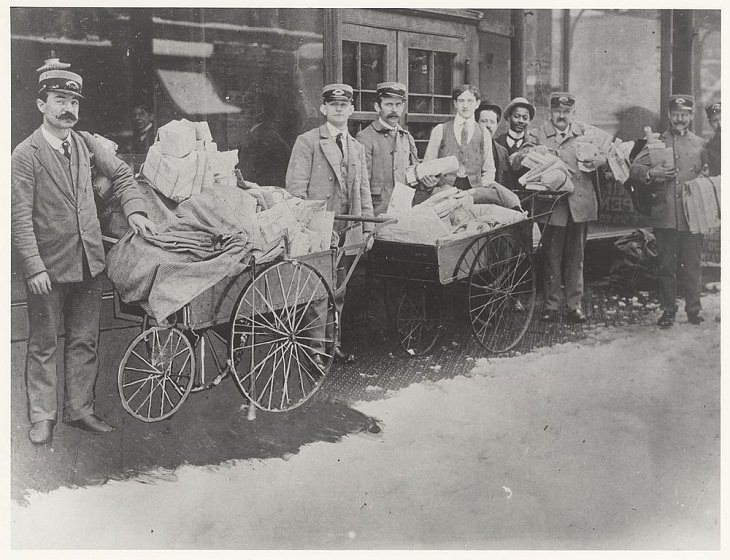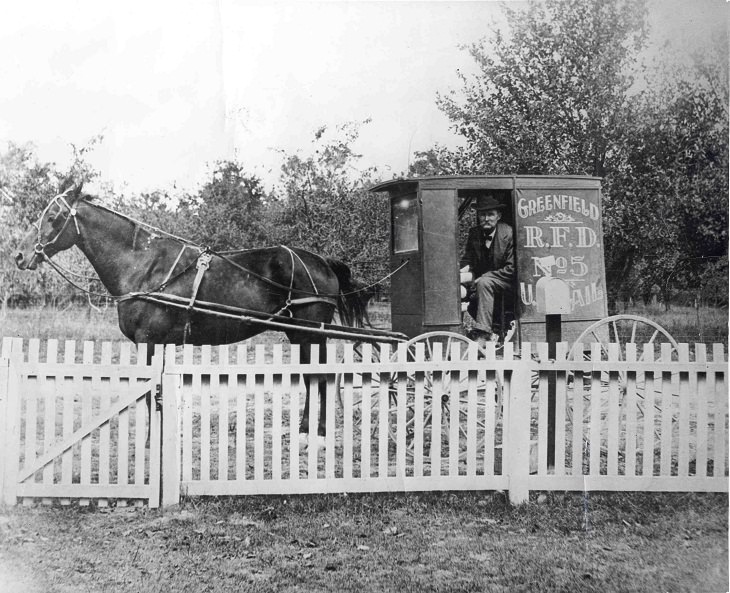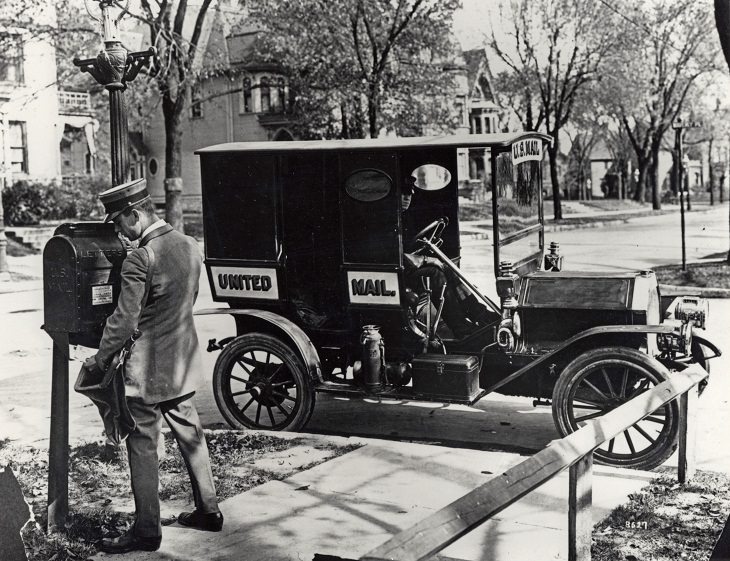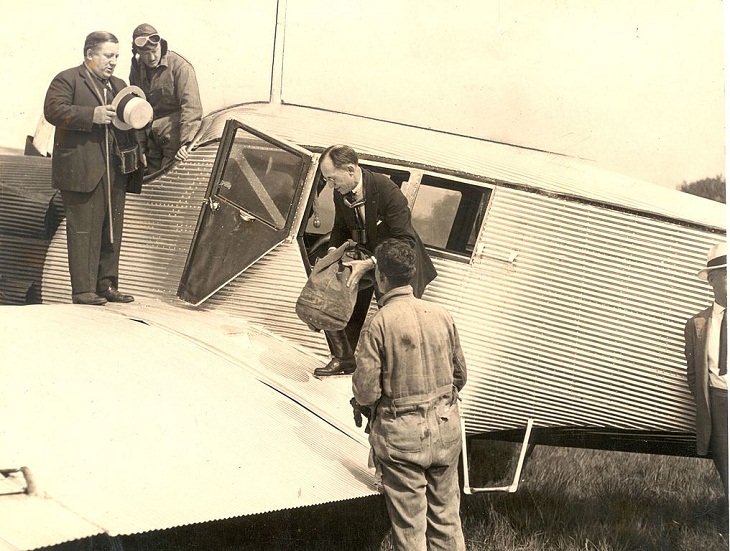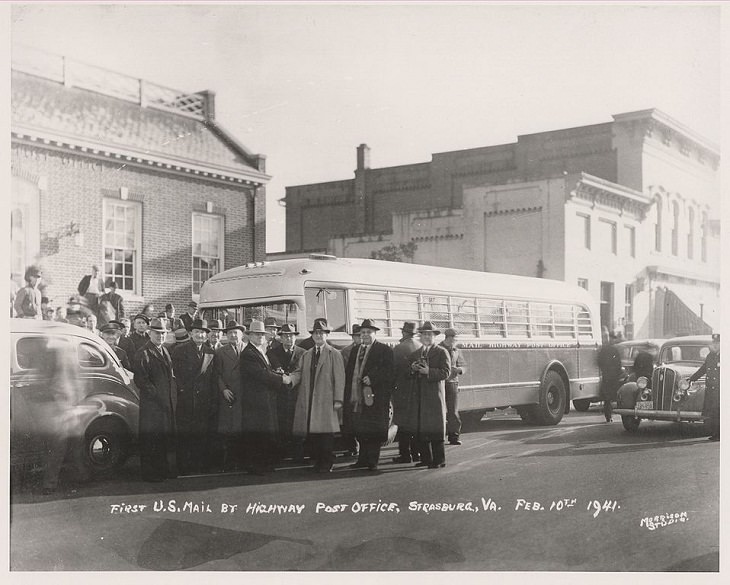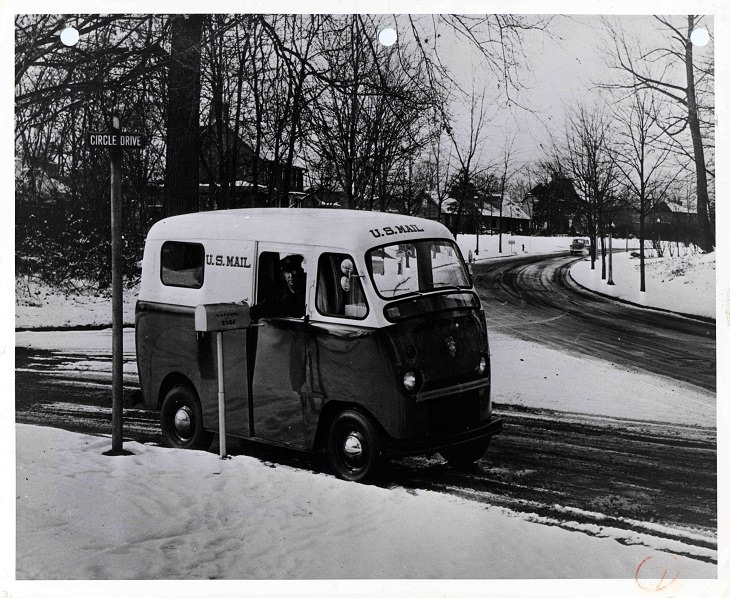Postal vehicles have become a part of day-to-day sights in the United States for years now. These vehicles don’t just deliver mail, though. They have also become a mark of trust and dependability of the U.S. Postal Service that has been serving the country for more than 200 years. In fact, these postal vehicles are now almost as recognizable as the letter carriers themselves. Postal vehicles in America have been evolving for over a century. While today, a number of modern automobiles are being used by the postal department, we cannot overlook the job done by the vehicles of the past. The older postal vehicles, while no longer in use, are nostalgic reminders of the days of the yore and they also let us know about the engineering progress that has been made.
Here are some of the oldest vehicles used by the U.S. Postal Department over the past many years.
1. Handcarts
In the early 1900s, carriers often had their hands full with the number of letters they had to deliver. More and more carriers in that period weren’t being able to handle the bulk mail for delivery or collection assigned on their routes. To help the carriers, postmasters purchased carts. These were three-wheeled carts and were made to be used by a single carrier.
The front-wheel was for balancing the load while the other two were for moving the cart ahead. When these carts were initially launched, they would be filled to the brim with mail and mail sacks. However, they served their purpose and provided the much-needed relief to the overburdened carriers.
2. Horse-drawn wagons
By the 1890s, horse-drawn wagons were commonly used to collect letters from sidewalks. These kinds of wagons were primarily used by rural letter carriers. Initially, the wagons looked more like little carts and couldn’t carry much weight. However, they had built-in screen cages that protected the mail. In the 1900s, wagons manufactured by Studebaker Brothers (as seen in the picture above) became popular as they were more robust, looked elegant and could carry a decent amount of bulk mail.
These wagons soon became standard sights in big American cities and would be routinely seen patrolling the streets. The postmen driving the wagons would be dressed in handsome uniforms. The screen wagons were painted with strokes of blue with red and white features along with gold leaf lettering.
3. Rural Free Delivery (RFD) carriers
By the year 1890, almost 41 million people lived in rural areas in America. While the city-dwellers were enjoying mails being delivered to them at home by then, the people in the rural areas had to travel all the way to the post office to pick up their mail.
This was when the Rural Free Delivery (RFD) carriers were introduced. The then postmaster, General John Wanamaker, who served from 1889 to 1893, proposed that rural customers receive free delivery. By 1893, a bill was introduced for experimental rural free delivery, and thus, the RFD carriers were launched.
Rural carriers not only delivered mail. They also sold stamps, delivered money orders, registered letters, and functioned as traveling post offices.
4. Three-wheeled mail collection motorcycles
The mail collection three-wheeled motorcycle was introduced in 1912 on an experimental basis. It was primarily initiated for mail collection in the district of Columbia. The automobile was probably launched for faster delivery as a motorcycle could move quicker. However, it couldn’t carry as much load as a wagon or a van could. Hence, while the idea of a three-wheeled mail-collection motorcycle was exciting, it couldn’t continue for long.
5. Gasoline-powered automobiles for the collection of letters from sidewalks
Collection boxes began making their way on American streets in the 1850s and had sprouted all over the country. By the mid-1900s, the postal department had started using a variety of gasoline-powered automobiles for the collection of letters from sidewalks.
Drivers of these little vehicles were often not Post Office Department employees but were hired to drive carriers between collection boxes and post offices. These automobiles were an instant hit, as they could perform the work of two horse-drawn carts.
6. Transcontinental airmail service
Transcontinental airmail service began in America in the summer of 1924. Despite suffering some initial setbacks, the airmail service was remarkably successful and completed about 90 percent of its flights. Soon, mail was also being flown at night. With its success, the transcontinental airmail service was extended to the east coast after a series of airmail beacons were completed that helped in guiding pilots all over the country.
One of the first planes to be used for the transcontinental pathfinding flight for the US Post Office Department was a Junkers Larson (JL-6) aircraft. This flight helped determine the best possible airmail route between New York, San Francisco, and California.
7. First Highway Post Office bus
The first trip of the Highway Post Office bus, designed and built by the White Motor Company of Cleveland, was made in 1941 in Strasburg, Virginia on February 10, 1941. The bus traveled on a route between Washington, DC and Harrisonburg, Virginia.
The Highway Post Office service was launched by the postal department because of the waning condition of railroad traffic in the early 1940s that had led to a decline in the use of railway trains. To lessen the load, the postal service transferred some of the burden from trains to highway buses. The service was slow to start off and didn’t really take off until the 1950s. However, soon these vividly-colored buses were seen running on American highways regularly.
The bus interiors were quite reminiscent of Railway Post Offices and were filled with letter cases and the letter distributing table along with holders for mail sacks. About 640 cubic feet of space was provided on the rear section of the bus and it could hold close to 150 mail sacks. For better security, the windows of the bus were barred on the outside and screened on the inside.
8. Right-hand drive postal vans
In the early 1950s, the U.S. Postal department had launched new right-hand drive vans. Curiously, the department ordered thousands of new postal vehicles then. Apparently, the decision was part of their post-war modernization plan. While a variety of vehicles were ordered, the right-hand drive step vans (as seen on the picture above) caught the fancy of the people the most. Perhaps it was because of its unusual yet elegant look. It could also carry a decent bulk of mail and looked fancy moving on the streets.
Most of these new vehicles performed quite adequately. However, some styles were modified and were re-ordered in large quantities later.
9. Three-wheeled “mailster” motor vehicle
Three-wheeled “mailster” motor vehicles were introduced by the mid-1950s to help carriers drive with the ever-growing amounts of mail that were sent after to American households after the culmination of the Second World War. The mailster wasn’t the most reliable motor, though. In some areas, it couldn’t work at all and could only function properly in temperate climates and on even terrain. If areas had even three inches of snow, the motor would be immobilized. Furthermore, there were also complaints that the mailster wouldn’t heat properly.
Another issue with the mailster was its three-wheeled design which would often tip over at speeds over 25 miles per hour. However, the vehicle still got the job done during the period and is remembered fondly for it.

